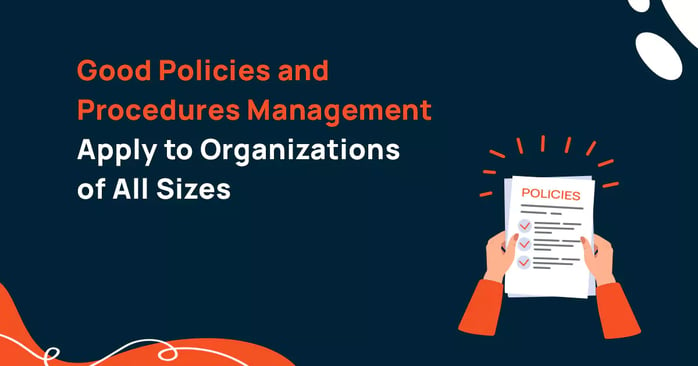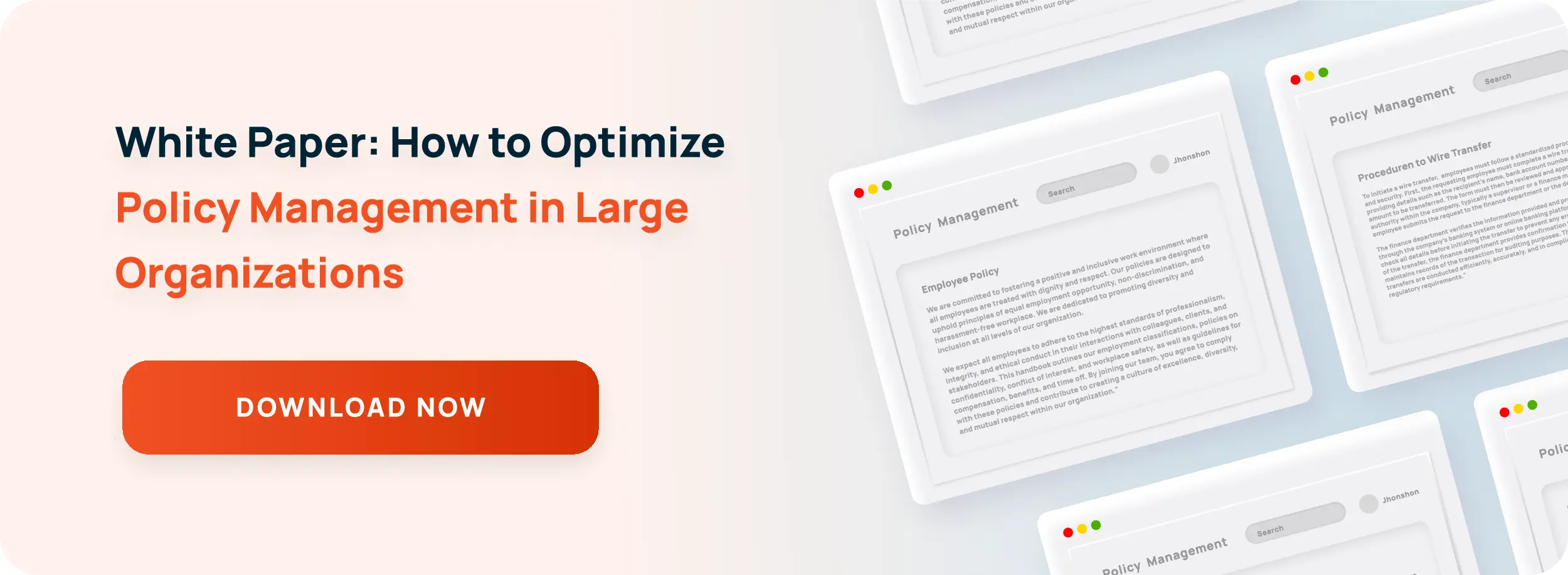You Don’t Have to be a Large Organization to have Great Policies and Procedures Management

Every time Policy and Procedure Management comes to mind, the majority of people tends to think of large corporations and think it is a task for the large enterprise only. Often, information and resources neglect the same needs for smaller organizations altogether, but many need to realize that it is equally important for smaller organizations to have a policy and procedure management system.
Since each business has certain regulations and standards to follow, it is very important to consider a basic yet sustainable structure for the smaller corporations as well. The planning, distributing and the acknowledging of the policies and procedures of any company, be it big or small, guarantee safety and protection from the unknown, while also serving as a reference guide for employees.
When a potential client visits your office or views your company’s website, they are looking for a thoughtfully organized and planned business. An effective policies and procedures management structure ensures that an image of a well-developed organization is promoted to the client.
In any business and industry, it takes hard work, resources and challenges to present that positive challenge. A good policy and procedure management system, even for the smaller organizations, can help create a successful and seamless image, while keeping them compliant in the fast-paced business market of today.
The smaller organizations can achieve success if they ensure they have a direct group dedicated to managing policies and procedures, such as a compliance team. This team does not have to be specific to policies and procedures management, but rather can absorb these tasks as part of their daily routine. Many small organizations will choose several operational management leaders to monitor all of the current processes and procedures, while also finding the gaps in efficiency and making improvements where necessary.
Often, policies are merely a direction or the idea a company has to take in order to comply with the law or company standards. Procedures are just as important, though; they ensure that all of the policies are carried out in the most efficient way possible.
When compliance challenges are being discussed in smaller companies and the workplace, organizations need to take on the approach of a system that ensures all employees of an organization have understood and read the policies and procedures. There is an ever-increasing demand on companies to have even the smaller businesses comply with the laws and regulations set by the different agencies. It’s ultimately led to an increased quantity and discussion on policies and procedures within the workplace. As more women entered the workforce, every organization should have Anti-Harassment and Non-Fraternization Policies and many others.
All companies, regardless of size, must realize that is vital to have a strong policy and procedure management system, and the knowledge of framing and distributing their policies is not just optional anymore, but equally necessary.
Read More: Policies and Procedures across Medium-size and Large Organizations
A Method that Works For You
Small Businesses (<1k Employees)
Small businesses benefit from applying best practices in policies and procedures. Incorporate the automation of one or two of your processes (employee acknowledgement, document management, etc.) to save your team more time.
Mid-Sized Businesses (1k-5k Employees)
Mid-sized businesses will benefit from automating the entire lifecycle of policies and procedures, using your metadata for simplified searching.
Enterprise-Sized Businesses (5k+ Employees)
Enterprise-sized businesses will benefit from a system that not only automates the entire policy lifecycle with advanced search functionality, but also offers custom real-time dashboards and reporting through the use of metadata.
Next step: No matter your size organization, you need processes to distribute policies and ensure employees read and understand policies and procedures so you can hold your workforce accountable to them. Read our guide for tips on how to establish these processes.

